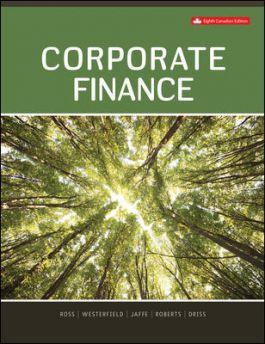Question
1. Discretionary financing neededA. Create a pro forma balance sheet and income statement for 2016 assuming that assets, accounts payable,and earnings before interest and taxes
1. Discretionary financing neededA. Create a pro forma balance sheet and income statement for 2016 assuming that assets, accounts payable,and earnings before interest and taxes grow by 9%. Assume that short-term notes payable and commonstock do not change between 2015 and 2016. Initially assume that long-term debt does not change between2015 and 2016. Estimate interest expense for 2016 using the interest rate and the end-of-year outstandingbalances of short-term notes payable and long-term debt.B. Calculate discretionary financing needed for 2016.C. Use a self-referencing formula in the pro forma balance sheet to determine the amount of debt needed tofinance the forecasted growth for 2016.2. Using the monthly rates of return for the S&P 500 index (using SPY as a proxy), Cypress Semiconductor(CY), and Fidelity Contrafund (FCNTX) from February 2009 to February 2014:*A. Create a scatter-plot chart to show the relation between the returns on CY and the S&P 500. Include achart title and label each axis.B. Create a scatter-plot chart to show the relation between the returns on FCNTX and the S&P 500.Include a chart title and label each axis.C. Add a linear trend line to each chart. Also include the trend lines equation and R2in each chart.D. How much of the variability in CY returns can be explained by variability in the broad market? Howmuch of the variability in FCNTX returns can be explained by variability in the broad market?3. Use the cash flows in the table to complete items A through D below:*Period Cash Flow1 $ 45,0002 40,0003 35,0004 30,0005 25,000A. If your required rate of return is 7% per year, what is the present value of the above cash flows?What is the future value of the above cash flows?B. Now, suppose that you are offered another investment that is identical, except that the cash flows arereversed (i.e., cash flow 1 is 25,000, cash flow 2 is 30,000. etc.). Is this worth more, or less, than theoriginal investment? Why?C. If you paid $130,000 for the original investment, what average annual rate of return would you earn?What rate of return would you earn on the reversed cash flows?D. Still assuming that your required return is 7%, calculate the NPV for the investment. Would you bewilling to purchase either of these investments? Explain why, or why not.FI 389 Fall 2016Cooper4. You have decided to invest in a small commercial office building that has one tenant. The tenant has alease that calls for annual rent payments of $20,000 per year for the next three years. However, after thislease expires you expect to be able to increase the rent by 5% per year for the next seven years. You planto sell the building for $300,000 ten years from now.*A. Create a table showing the projected cash flows for this investment assuming that the next leasepayment will be made in one year.B. Assuming that you need to earn 11% per year on this investment, what is the maximum price thatyou would be willing to pay for the building today? Use the NPV function.C. Notice that the cash flow stream starts out as a three-year regular annuity, but it then changes intoa seven-year graduated annuity plus a lump sum in year 10. Use the principal of value additivity tocalculate the present value of the cash flows.D. Suppose that the current owner of the building is asking $200,000 for the building. If you paid thisprice, what annual rate of return would you earn? Should you buy the building at this price?5. Congratulations! You have just won the State Lottery. The lottery prize was advertised as an annuitized$105 million paid out in 30 equal annual payments beginning immediately. The annual payment isdetermined by dividing the advertised prize by the number of payments. You now have up to 60 days todetermine whether to take the cash prize or the annuity.*A. If you were to choose the annuitized prize, how much would you receive each year?B. The cash prize is the present value of the annuity payments. If interest rates are 4.5%, how muchwill you receive if you choose the cash option?C. Now suppose that, as many lotteries do, the annuitized cash flows will grow by 3% per year to keepup with inflation, but they still add up to $105 million. If you took the annuitized cash prize instead,how much would you receive (before taxes)?6. Five years ago you obtained a $180,000 mortgage loan that had an initial term of 30 years. The interest rateon the loan is 11%. You can refinance the loan with a 20-year loan that has an interest rate of 9.0%. If yourefinance, you will have to pay $4,000 of loan origination fees and a 2% prepayment penalty on theoutstanding principal balance of the original loan.A. What is the original loans monthly payment?B. What is the original loans outstanding balance after ten years?C. What are the total fees incurred to refinance the first loan?D. What is the monthly payment on the new loan?E. What is the incremental cash flow each month due to the lower monthly payment on the new loan?FI 389 Fall 2016CooperF. What is the rate of return on your investment in the refinancing if you repay the new loan over its 20-year term and do not make any prepayments?G. What is the effective cost of refinancing if you repay the new loan over its 20-year term and do not makeprepayments?
Step by Step Solution
There are 3 Steps involved in it
Step: 1

Get Instant Access to Expert-Tailored Solutions
See step-by-step solutions with expert insights and AI powered tools for academic success
Step: 2

Step: 3

Ace Your Homework with AI
Get the answers you need in no time with our AI-driven, step-by-step assistance
Get Started


